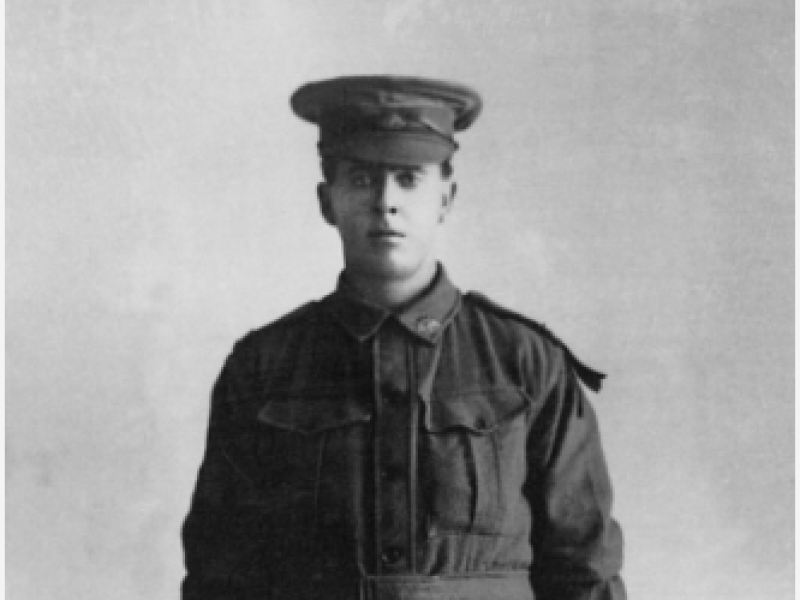Corporal Ernest Corby, 3rd Battalion, AIF
Christopher Ernest Corby was born in 1885, one of 11 children to Reuben and Catherine Corby from Tuena in the NSW southern tablelands. Known as “Ernie”, he attended Tuena State School and later worked as a grazier and shearer on the family property, “Rockdale”.
Corby enlisted in the Australian Imperial Force (AIF) at Sydney Town Hall in January 1916, and embarked in June 1916 for the training camps in England.
He joined a reinforcement group for the 3rd Battalion and sailed for France. Corby joined the battalion in the relatively quiet Ypres sector in Belgium, where it was resting heavy fighting at Pozières and Mouquet Farm.
The 3rd Battalion then returned to the Somme and held the line between the villages of Flers and Guedecourt during the bitterly cold winter of 1916 to 1917.
Corby participated in all the battalion’s major actions throughout 1917, including the advance to the Hindenburg Line in March and April. When British operations shifted north into Belgium, he was in the attack at Menin Road during the Third Battle of Ypres.
By this stage, he had been promoted to lance corporal, and in October, after fighting at Broodseinde, was promoted to corporal before going on leave to London. He returned to the battalion in November, spending this winter in the now-quiet sector near the town of Messines.
The tranquillity of that cold but quiet winter ended in March when the German army launched its Spring Offensive in France, in an effort to split the British and French armies along the river Somme. Their objective was the city of Amiens, the major rail and logistical hub for the allies in France, and they also attempted to strike at the rail hub further to the north at Hazebroucke.
The 3rd Battalion was sent to defend the line between the forward villages of Merris and Strazeele, and on 14 April 1918 they fought off a strong and determined German assault near the position known as Gutzer Farm.
According to one eyewitness, Corby was rallying his men sometime around 10.30 am when a German bullet struck him in the head and killed him instantly. He was 32 years old.
He was buried nearby, along with a number of other 3rd Battalion men but the location of his grave was lost.
For decades, Corby’s name appeared on the Australian National Memorial at Villers-Bretonneux, which records the names of over 10,000 Australians killed in France who have no known grave.
But in 2005, a farmer tilling his field near Merris discovered the skeletal remains of four Australian soldiers who had been killed during the First World War. After research and forensic investigation, one of the recovered soldiers was believed to be Ernie Corby.
All four soldiers were later reinterred at the Outtersteene Communal Cemetery Extension in nearby Bailleul.
Aaron Pegram, Historian, Military History Program
Image: Studio portrait of 5665 Private (Pte) Ernest Corby, 3rd Battalion, of Tuena, NSW, 1916.

 Australian War Memorial
Australian War Memorial